Abstract
A new solid-phase immunoassay, time-resolved fluoroimmunoassay (TR-FIA), for rubella antibody was developed. The test used polystyrene beads coated with rubella antigen as the solid phase and a chelate of the rare earth metal europium as fluorescent label. A fast light pulse from a xenon flash lamp was used to excite the label, and after a 400-mus delay time the emission fluorescence was measured for 500-mus at 1-ms intervals during a total counting time of 1 s. Background fluorescence of short duration caused by fluorescent serum components and scattering could be eliminated by including the delay time. The TR-FIA was compared with hemagglutination inhibition, single radial hemolysis, and two types of radioimmunoassay (RIA) (a commercial RIA [GammaCoat] and a noncommercial RIA [T-RIA]) by using 60 serum specimens from patients with remote rubella infection. Overall agreement of TR-FIA with hemagglutination inhibition and GammaCoat was 96.7%, with single radial hemolysis 98.3%, and with T-RIA 100%. Linear regression coefficients varied from 0.83 to 0.94, the best being obtained with single radial hemolysis and T-RIA. TR-FIA was also found to be suitable for the diagnosis of acute infections, as significant increases of antibody level were detected in all 30 paired serum specimens tested from patients with an acute rubella infection. Sensitivity and specificity comparable to those of RIA and enzyme immunoassay were obtained with TR-FIA. Furthermore, the advantage that TR-FIA has over RIA is that it incorporates a nonisotopic and stable label; its advantage over EIA is that it is easier to standardize because no additional reaction with substrate is required.
Full text
PDF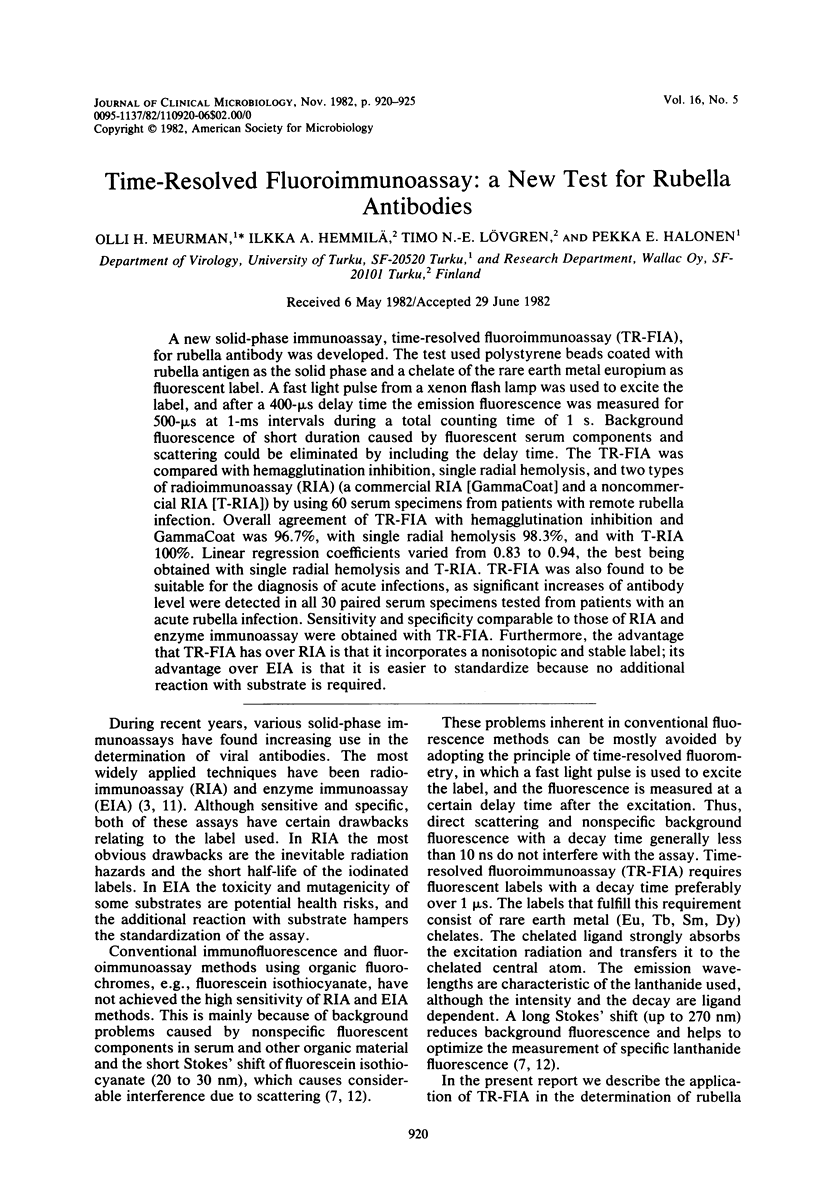
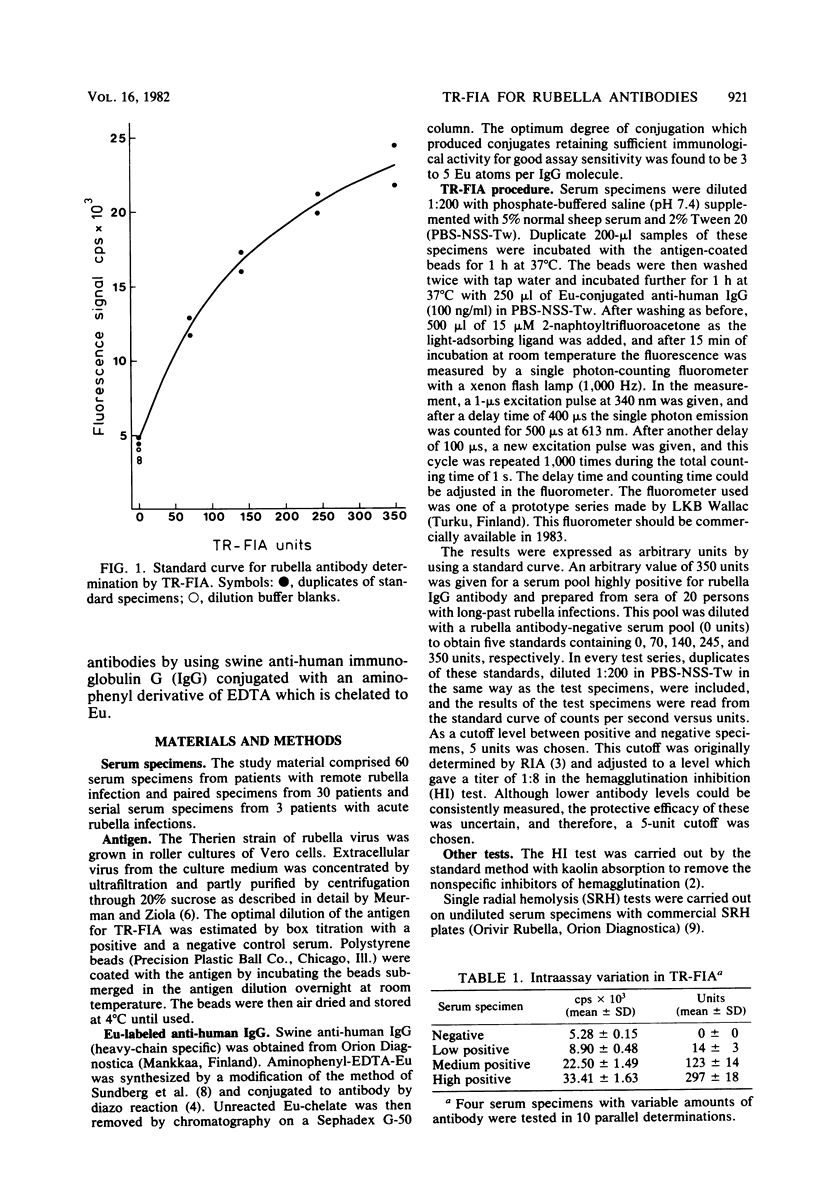
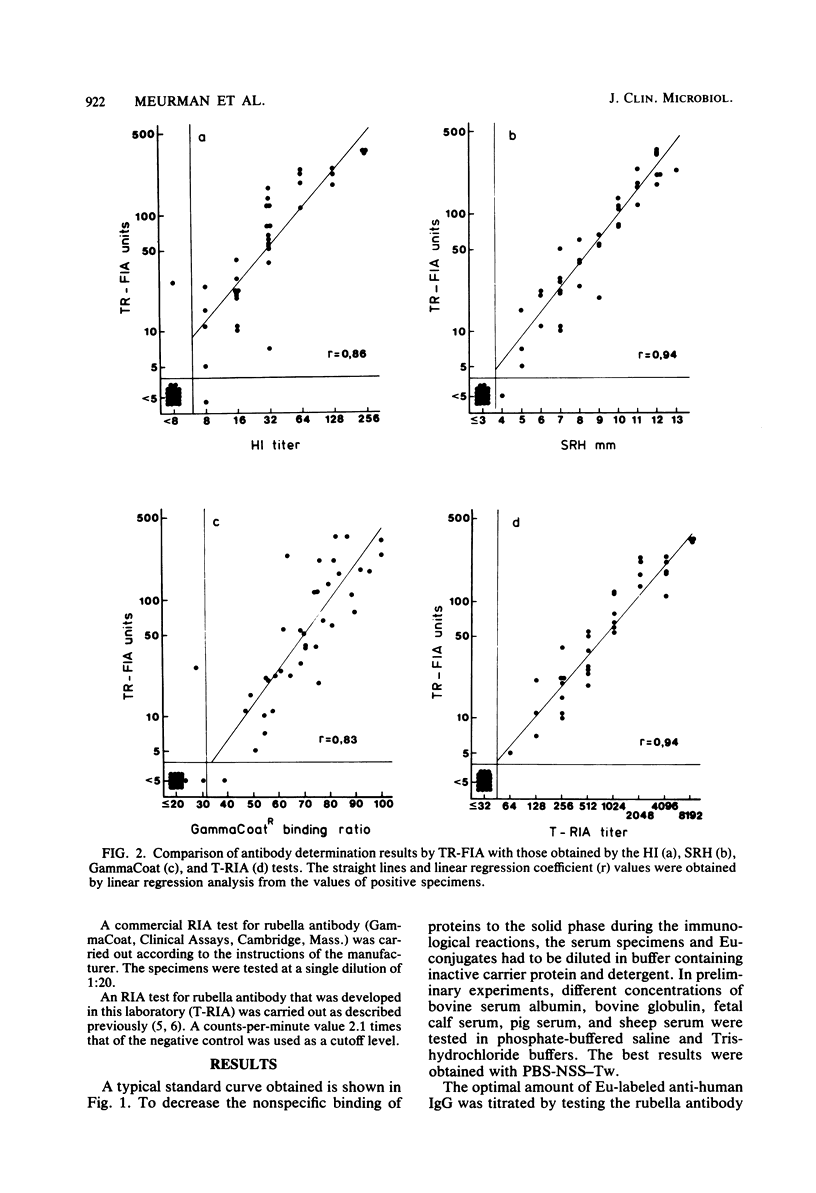
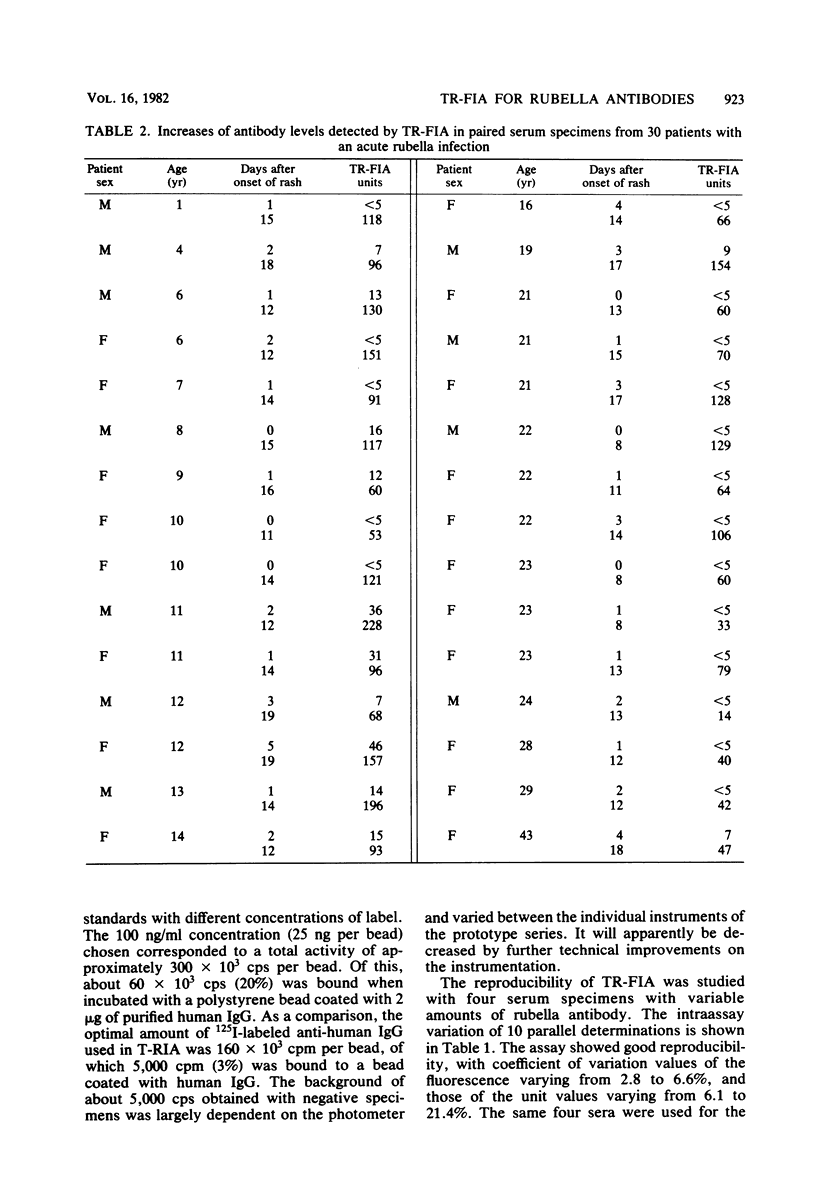
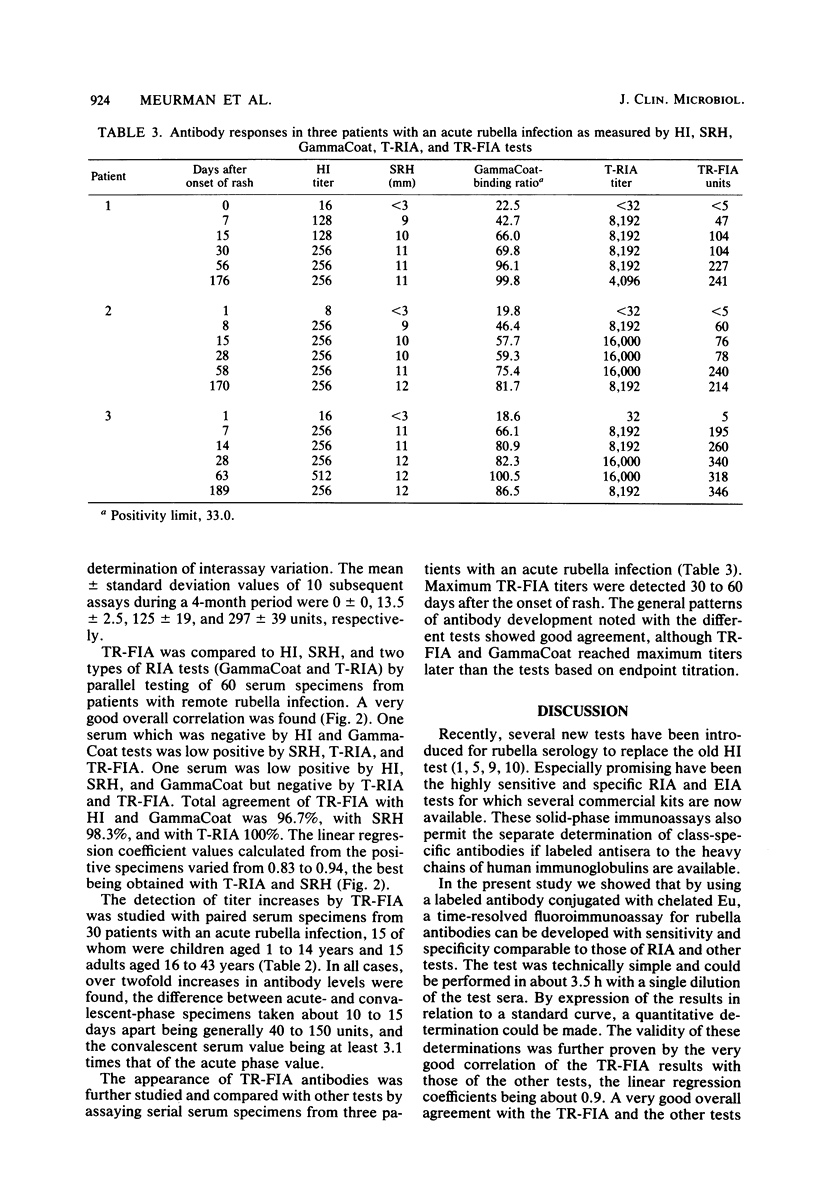

Selected References
These references are in PubMed. This may not be the complete list of references from this article.
- Brody J. P., Binkley J. H., Harding S. A. Evaluation and comparison of two assays for detection of immunity to rubella infection. J Clin Microbiol. 1979 Nov;10(5):708–711. doi: 10.1128/jcm.10.5.708-711.1979. [DOI] [PMC free article] [PubMed] [Google Scholar]
- Halonen P., Meurman O. Radioimmunoassay in diagnostic virology. Lab Res Methods Biol Med. 1982;5:83–124. [PubMed] [Google Scholar]
- Leung C. S., Meares C. F. Attachment of fluorescent metal chelates to macromolecules using "bifunctional" chelating agents. Biochem Biophys Res Commun. 1977 Mar 7;75(1):149–155. doi: 10.1016/0006-291x(77)91302-x. [DOI] [PubMed] [Google Scholar]
- Meurman O. H. Persistence of immunoglobulin G and immunoglobulin M antibodies after postnatal rubella infection determined by solid-phase radioimmunoassay. J Clin Microbiol. 1978 Jan;7(1):34–38. doi: 10.1128/jcm.7.1.34-38.1978. [DOI] [PMC free article] [PubMed] [Google Scholar]
- Meurman O. H., Ziola B. R. IgM-class rheumatoid factor interference in the solid-phase radioimmunoassay of rubella-specific IgM antibodies. J Clin Pathol. 1978 May;31(5):483–487. doi: 10.1136/jcp.31.5.483. [DOI] [PMC free article] [PubMed] [Google Scholar]
- Soini E., Hemmilä I. Fluoroimmunoassay: present status and key problems. Clin Chem. 1979 Mar;25(3):353–361. [PubMed] [Google Scholar]
- Sundberg M. W., Meares C. F., Goodwin D. A., Diamanti C. I. Selective binding of metal ions to macromolecules using bifunctional analogs of EDTA. J Med Chem. 1974 Dec;17(12):1304–1307. doi: 10.1021/jm00258a015. [DOI] [PubMed] [Google Scholar]
- Vejtorp M. Enzyme-linked immunosorbent assay for determination of rubella IgG antibodies. Acta Pathol Microbiol Scand B. 1978 Dec;86B(6):387–392. doi: 10.1111/j.1699-0463.1978.tb00061.x. [DOI] [PubMed] [Google Scholar]
- Voller A., Bartlett A., Bidwell D. E. Enzyme immunoassays with special reference to ELISA techniques. J Clin Pathol. 1978 Jun;31(6):507–520. doi: 10.1136/jcp.31.6.507. [DOI] [PMC free article] [PubMed] [Google Scholar]
- Vänänen P., Vaheri A. Hemolysis-in-gel test in immunity surveys and diagnosis of rubella. J Med Virol. 1979;3(4):245–252. doi: 10.1002/jmv.1890030402. [DOI] [PubMed] [Google Scholar]


